Volvo PV544
humble beginnings
In 1963, I purchased a new Volvo PV544 sedan. I still had limited finances and settled to hill climbing occasionally – autocrossing mostly. I tried my first ice race with this car in 1963 – decided it was too cold of a sport.
In the early 60’s the iconic looking Volvo PV544 already started making its mark in Rallies and early SCCA racing circuits. I became intrigued with this marque for my introduction to SCCA B sedan racing. I realized the simplicity of the platform and my ability to work on the car was an important part of racing, so I purchased a new 1963 Volvo PV544 with the B18 engine to start off with, and proceeded to become familiar with the car.

Tony’s Volvo jacket patch

Adamowicz collection – Bill Oursler photo
Sideways in Marlboro’s Cappys Corner –
From 1963 to 66, Tony road raced his own PV544 Volvo in East Coast SCCA Regional events.
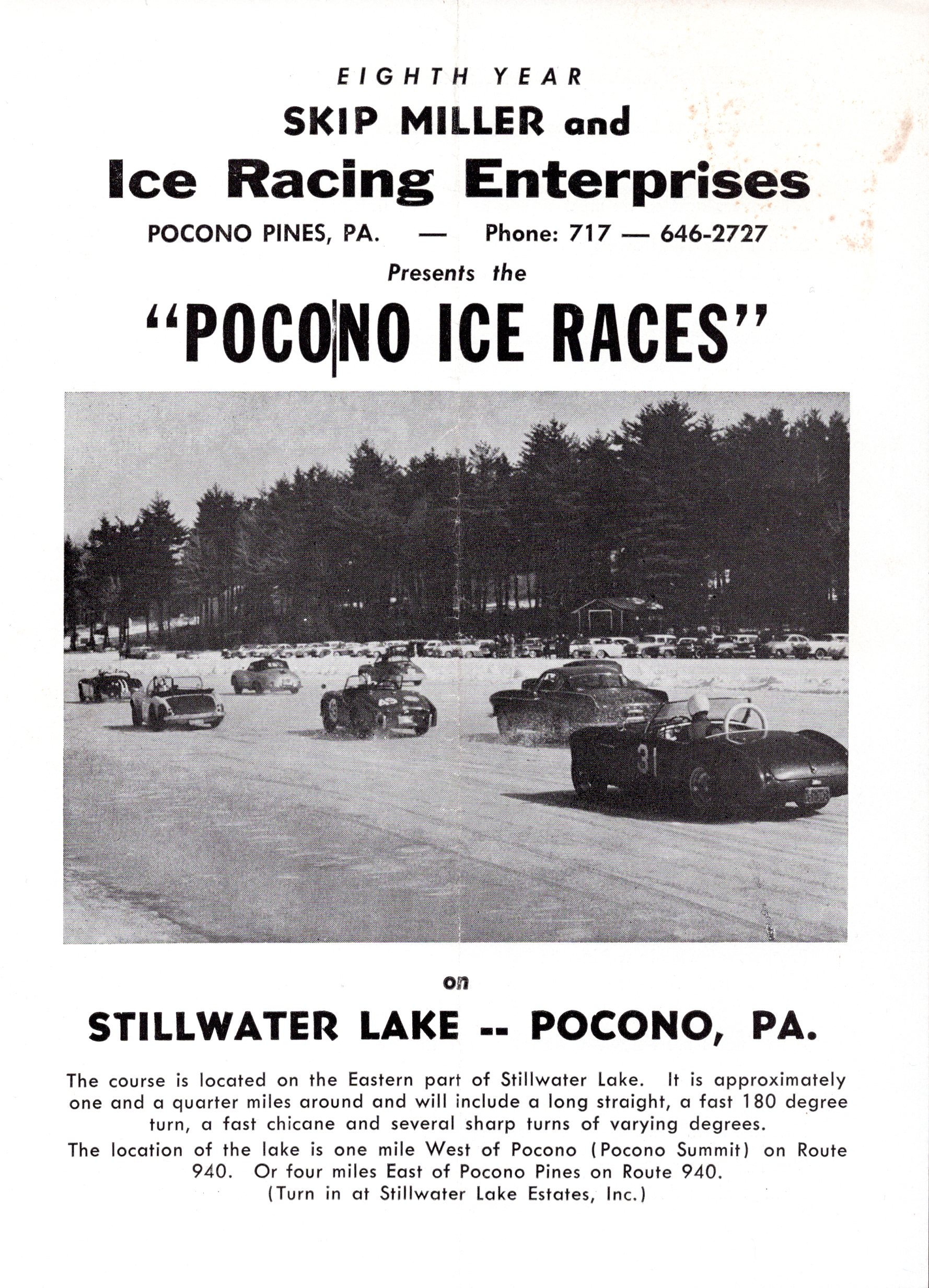
Tony describes the Volvo:
My biggest claim to chassis “mods” was a rear sway bar. I believe I was the first to put one on a sedan back then. Of course, I had Koni shocks, lowered, heavy front sway bar.
My engine cylinder head porting job was patterned after the Triumph cylinder heads and provided a lot of power output. Actual horsepower output was not determined as the engine was never dynoed, however more than sufficient for the class B sedans. My SU carbs were heavily modified internally, including large bell-shaped velocity stacks to capture the fuel fumes around the inlets. This allowed the excess fumes to be pulled back into the engine at high revs. I installed a fresh air intake tube to supply cool air to the carbs. Under hood temperatures were allowed to exit from the raised mounting of the rear of the hood. The hood appeared not to fit or close well at the rear.

Adamowicz collection – Bill Oursler photo
Tony drives away from a pesky Mini!
Competing at an autocross in a Hagerstown, Maryland shopping center parking lot

Adamowicz collection
Realizing my problem, I soon became a student of the SCCA rule book, looking for solutions. I had already welded up the spider gears for my 4:56 rear end ratio and determined that the rules allowed installation of sway bars to be free. I took this a step further to include the rear of the car and installed a rear sway bar. Not an easy feat to accomplish, as no one was utilizing rear sway bars at the time. I must have been one of the very first to install a rear sway bar on a sedan. I recall not really understanding the geometry of the rear suspension; however, I reckoned that if I kept the roll bar centered centerline of the differential, I would not affect any built-in factory geometry. I started with a front sway bar from a Triumph TR4, a left-over stock unit from one of my Misery Manor roommates Triumph racers. I removed the rear fuel tank and started to review the situation and determined in order to accomplish mounting a rear sway bar, I had to build a bridge mounting trust, welded from the rear framework. Trying to keep the installations simple, the rear sway bar mount looked like it was mounted to an upside-down bridge, centered perfectly to the centerline of the differential and allowing the drop link ends of the bar to be mounted to the rear trailing arms. Everything looked like it was installed from the factory. A fresh coat of primer and flat back paint ant the installation was complete. I couldn’t wait to try it, out, I re installed the fuel tank and added enough fuel to take the car out on a midnight run through the streets of Falls Church, Virginia. Immediately I noticed the rear of the car was stiffer to match the front and I was able to toss the car around corners with the locked rear differential. The results were spectacular at Marlboro 1.5-mile raceway. My biggest claim to making this chassis handle was my ingenuity “mods” by installing a rear sway bar before anyone knew about doing so.
Now that the handling and final drive allowed the power to be applied to the track, the issue of stopping became more of a concern. The PV544 had drum brakes all around and required special Corvette sintered metallic brake linings installed on to the factory brake shoes. I ventilated the back of brake backing plates to allow air to pass through and exit back out. This seemed to be the best that could be worked out. Unfortunately, all my later model B sedan competition such as the Lotus Cortina, the Alfa Gulia Super TI had front disc brakes.
Nothing was more exciting than to take my hot-rodded Volvo PV544 around Marlboro raceway. The 1.5-mile racetrack was perfect for my gearing and engine power output. I was able to win the regional SCCA -B sedan class championship in 1965, beating out the newer designed competition of the Alfa Romeo Gulia Super TI and the Lotus Cortina, both with twin cam engines, Weber carbureted engines and Disc Brake stopping power. The Volvo’s ultimate lap time could best the Group 44 Lotus Cortina times at Marlboro, drum brakes and all!
I remember the road to Hagerstown well, and Fredrick, MD. One night, I outran a MD State trooper on the road back from Hagerstown, MD to Blue Ridge Summit, PA. He couldn’t catch my B sedan Volvo PV544. It had started to snow, and he could follow my tracks, so I got on a main road to Waynesboro, PA. The trail had been diminished. I was working at Weikert’s garage in Blue Ridge summit, PA when the next day the same state trooper, off duty was admiring how fast the car was, I played really dumb, indicating it must have been someone else.
My PV544 was indeed very fast at the time and got even faster when I moved down to Falls Church Va. I moved in with my three roommates. We lived in a house of 4 racers, called Misery Manor and of course my Volvo was odd car out, as the other roommates had Triumph cars.
I won the B sedan SCCA regional championship, beating out an Alfa Giulia TI Super with the ole PV544, drum brakes, steel wheels, radial tires, Locked Rear End, SU carbs, push rod non crossover 1800 CC engine. No headers either, I modified the stock exhaust manifold internally to mimic headers so the Isky cam would work. The secret weapon was the rear sway bar that transformed the PV544 into a handling machine. I believe I am the very first to have installed a rear sway bar on a B Sedan.
When I left the Army, I started to work on the engine. One of my friends, James Taylor, was soon discharged from CIA service. We worked for peanuts at Bud Weikert’s garage in Blue Ridge Summit, PA. We met Bob Krokus and John Williams at Marlboro, both had Triumphs, TR-3 and TR-4. Jim and I moved down to Falls Church, VA. to live in their house. We shared time in the attached two car garage prepping our cars for local races.
Income was still not great, but I was able to learn a lot from the Triumphs and applied it to my Volvo. Did a lot of head grinding on the kitchen table. Needed a cam, called California to Isky cams, had a nice conversation with a man on the other end who agreed to send me a cam for my B18 engine. When I asked who I was speaking with, he replied “Ed.” That’s how I got to make my engine almost unbeatable in B sedan. Finished 2nd in region in 64, won regional championship B sedan in 65. Was hired by Group 44 in late 65 for the 66 season.
The basic car is simple, stout and reliable; however, it had some initial handling issues that I soon experienced through auto-crossing, Hill Climbing and racing it at Marlboro Raceway outside of Washington DC. Interestingly, the word VOLVO in Swedish translates to “I Roll” and roll the car did in the turns. I witnessed many rollovers with my Volvo competitors as well. The solution and first thing I did was to stiffen the front and rear end by lowering the springs and installing Koni Shock absorbers. I added a HD front roll bar application to increase roll stiffness in turns. Adding 1 .5 degrees of Negative camber also helped the cornering as well. Ford steel wheels were the wheel of choice as alloy wheels were out of my budget. I soon realized I had increased the front stiffness so much that the car became a under steering handful.

Booklet Ed Iskenderian sent to Tony
Exhaust Headers were illegal, not yet FIA homologated for the car, so instead I modified the stock exhaust manifold by welding in an internal splitter for the two center exhaust ports. The stock manifold didn’t have an internal splitter, so it blended the center port exhaust gas flow, contaminating the breathing and acted like a rev limiter. That issue alone made a hot cam useless even though optional camshafts were legal. Installing the internal splitter fixed the problem so I could benefit from an experimental ISKY cam and valve springs, retainers sent to me by the man himself, Ed Iskenderian Racing Cams in Gardena, California. The exhaust manifold exit was enlarged to the next available size and mated to a short exhaust pipe exiting on the passenger side just behind the rear wheels. Adding insult to injury, I had another secret weapon a specialized sized long megaphone that exited the gasses at a precise angle, similar to P51 Mustangs and Spitfires. This allowed the sound enhanced exhaust gases to be pulled out of the engine by the air passing over the megaphone angle.

Adamowicz collection – Bill Oursler photo

Tony’s Volvo workshop manual

Tony’s FIA papers for his Volvo

Adamowicz collection

Adamowicz collection
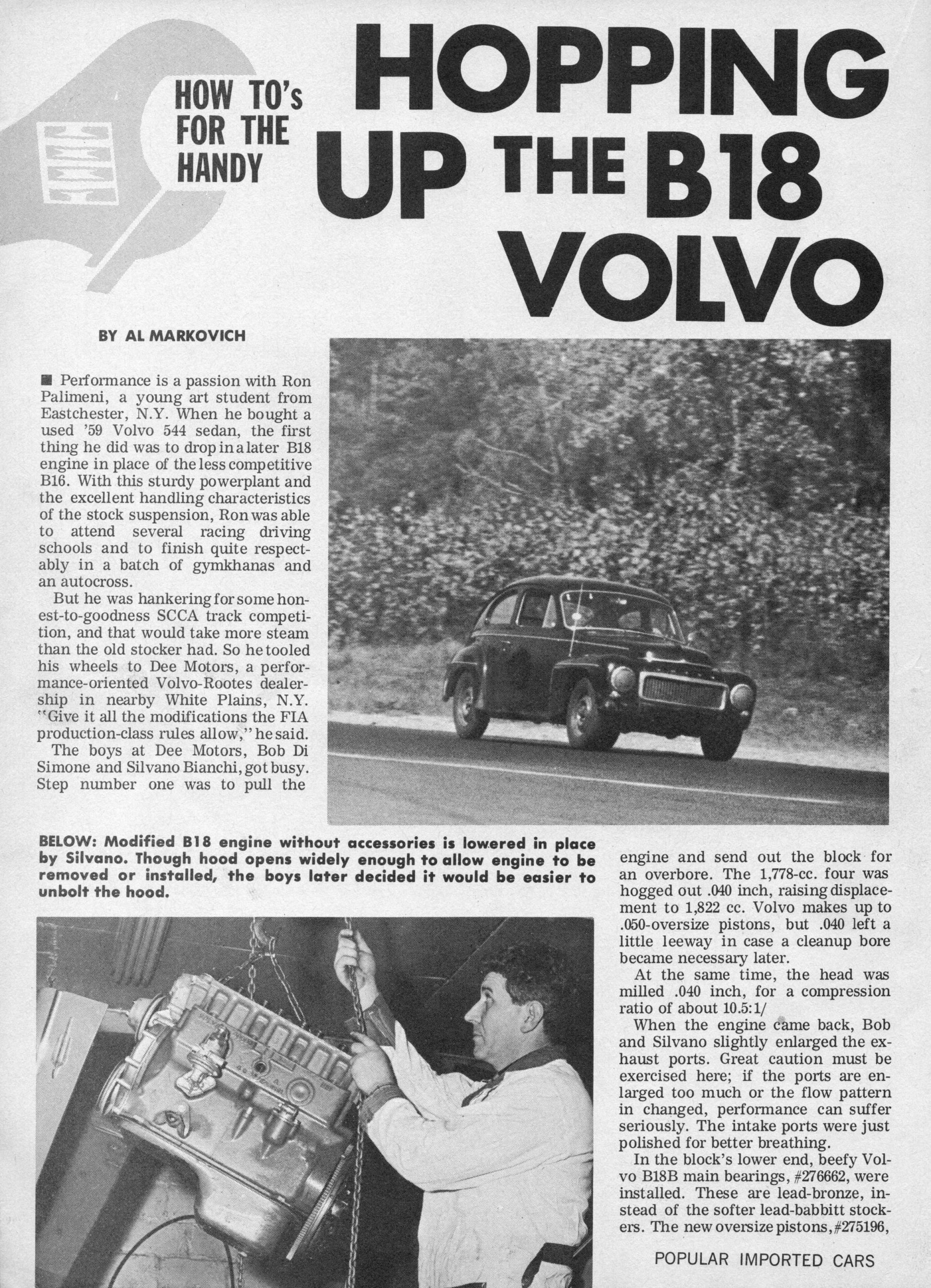

Adamowicz collection

Adamowicz collection

Adamowicz collection

Adamowicz collection

Adamowicz collection

Adamowicz collection
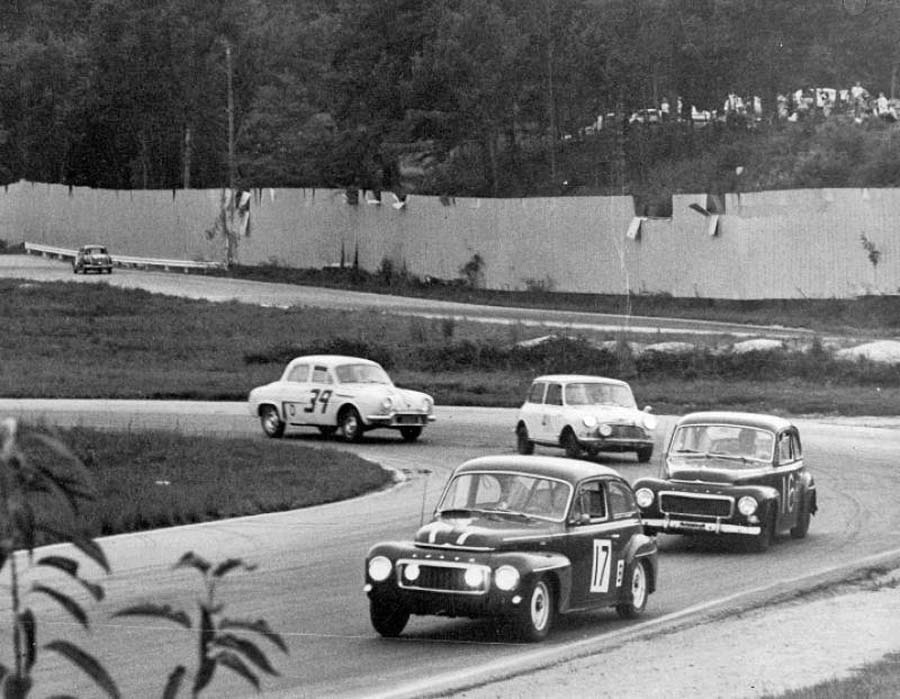
Adamowicz collection
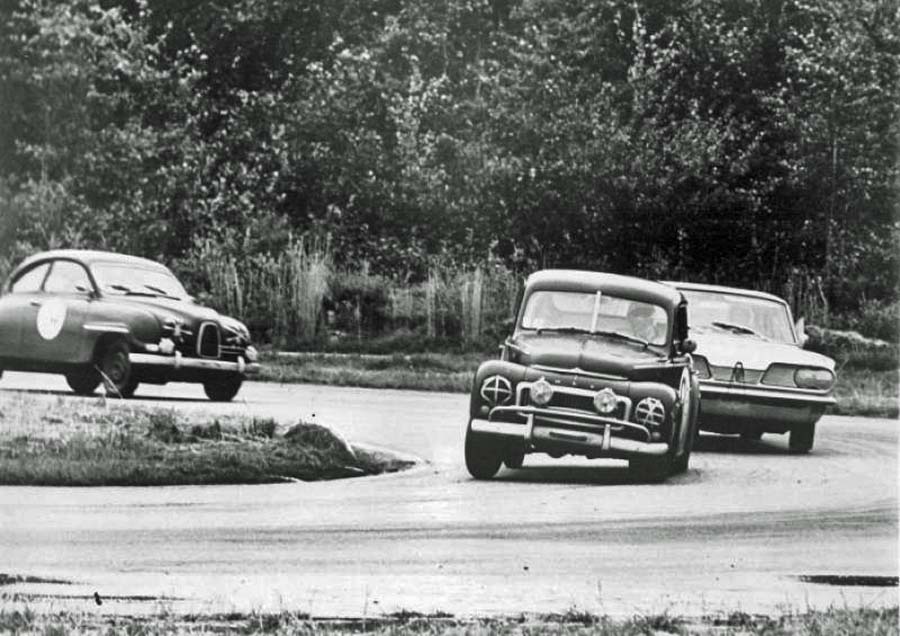
Adamowicz collection

Adamowicz collection

Adamowicz collection
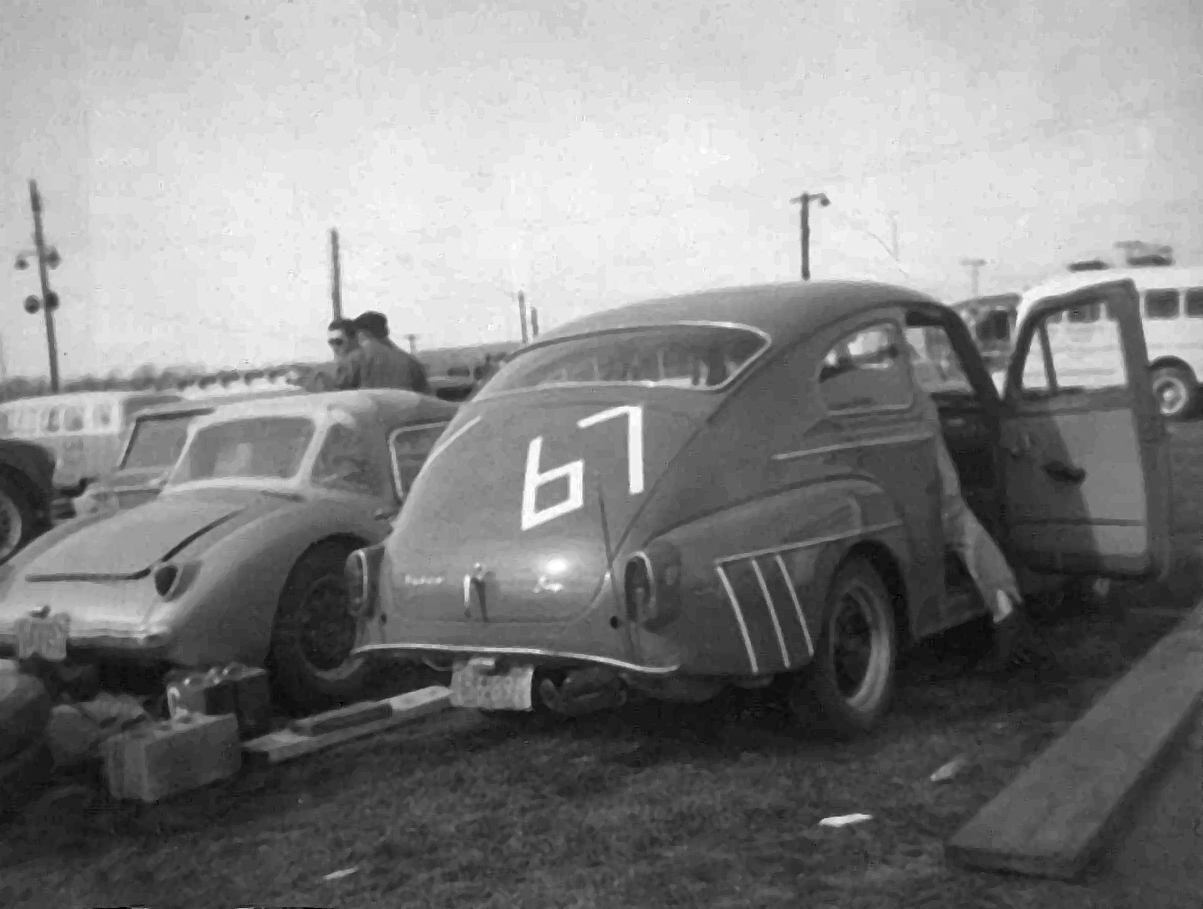
Adamowicz collection
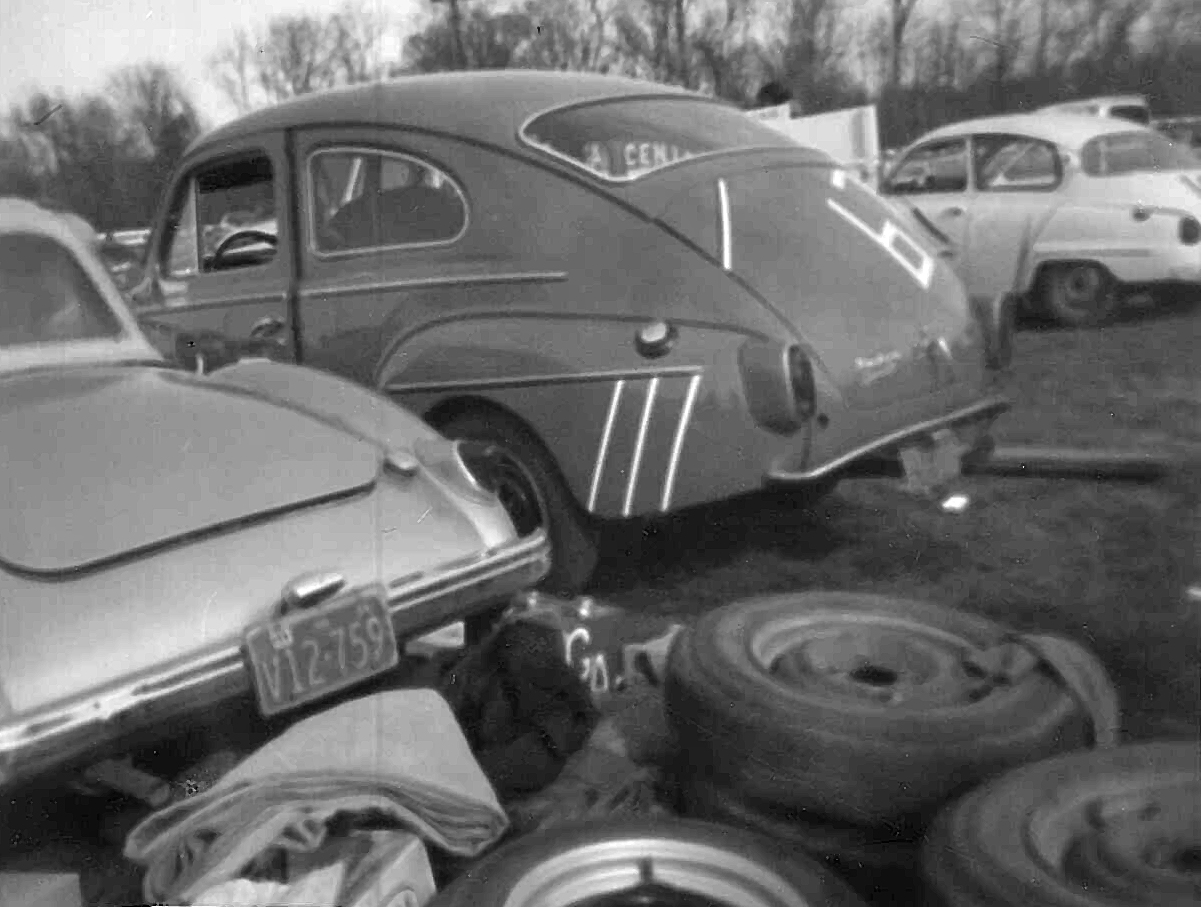
Adamowicz collection
November 8, 1964
Marlboro Speedway
Upper Marlboro, Maryland
Volvo PV544

“In other events, Randy Canfield did his usual competent job in winning HP with his well-travelled Sprite. The ten lapper for GP cars and sedans saw some spirited driving on the part of three good drivers in three different cars with the final outcome looking like this: 1. Dick Gilmartin, Spitfire; 2. Pete Van der Vate, Sprite Mk. II; 3. Dick Roberts, Sprite Mk. I. Tony Adamowicz took the sedan portion of the race in his Volvo 544. The FP race was another Hollis Webster benefit, though Brian Fuerstenau’s TR3 held the lead during the early stages until a failure put him out. Also, Frank Picha put on a fine display of driving by bringing his TR3 from last to second place in the ten laps. Frank did particularly well in controlling his car as it lost a wheel at the finish line during the preceding five lapper.”
– Writer unknown

The first lap for the GP and sedans. Tony’s #96 Volvo on left.

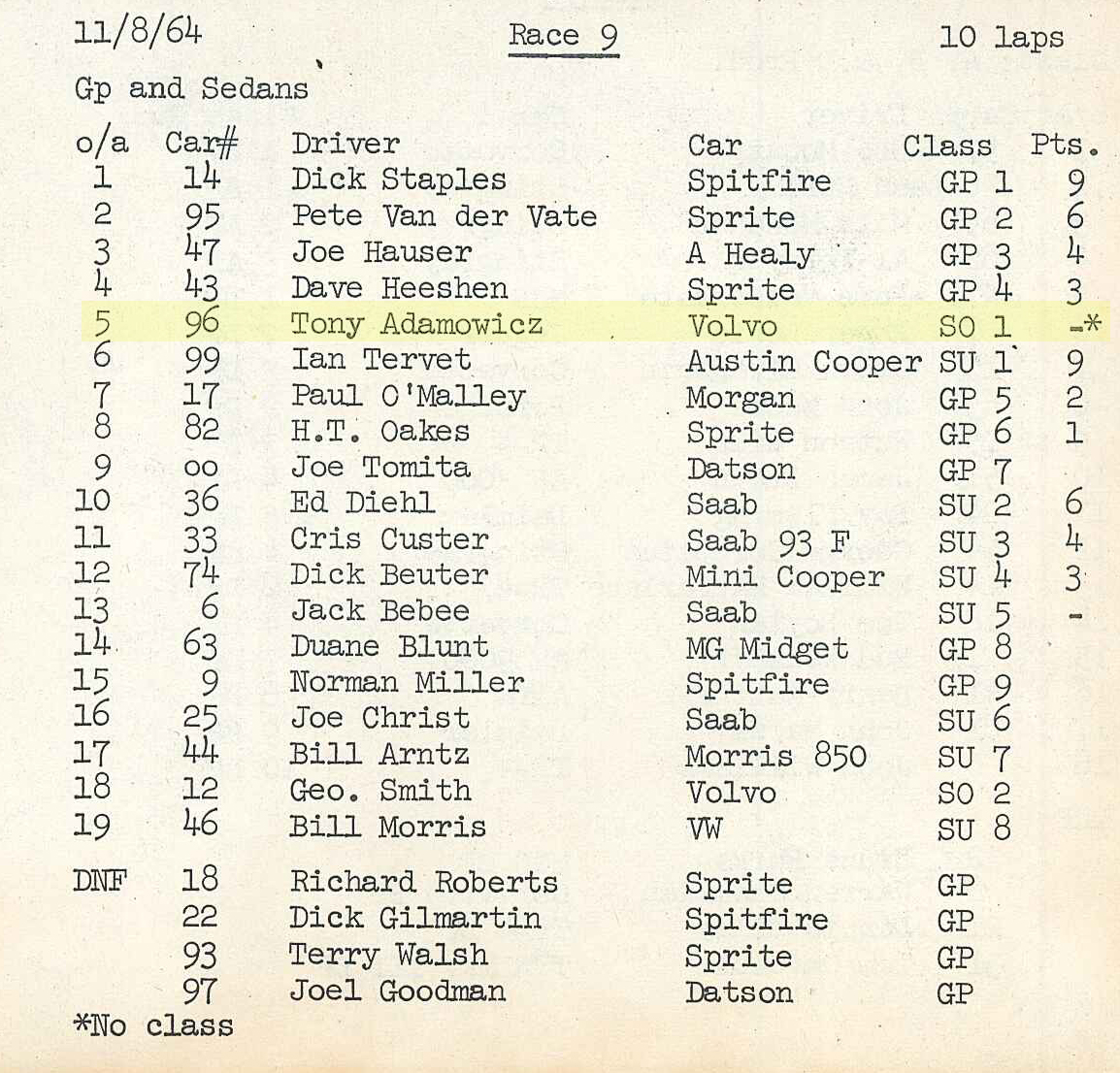
November 29, 1964
Marlboro Speedway
Upper Marlboro, Maryland
Volvo PV544

1964 FINAL MARLBORO REGIONAL POINT STANDINGS
With the final checkered flag at the November 29 Regional races, the Marlboro season for 1964 came to a close. And with it came the final reckonings in the Region point championships in the various categories and classes.
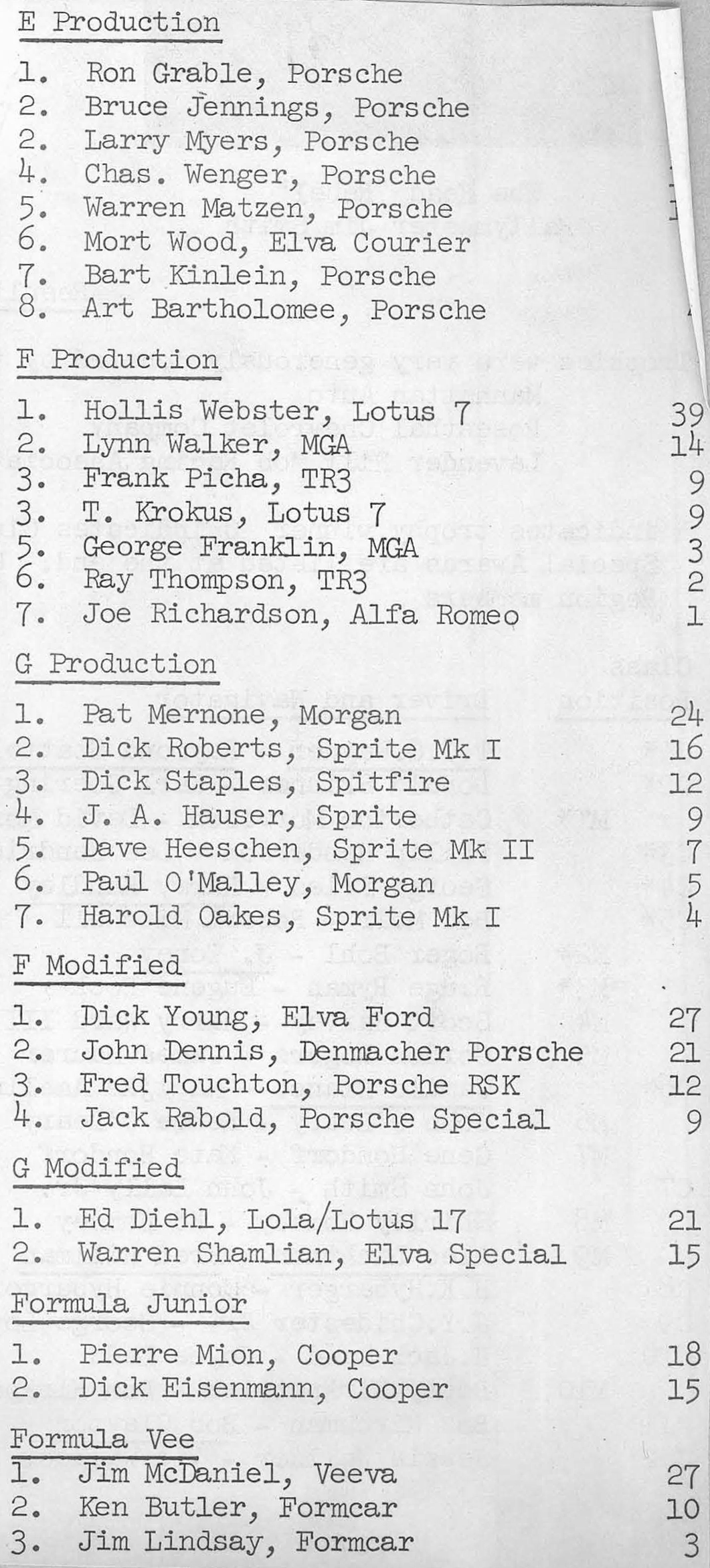
May 1965
Marlboro Speedway “Marlboro 500”
Upper Marlboro, Maryland
Volvo PV544

October 24, 1965
Marlboro Speedway “Oktoberfest” Regional Races
Upper Marlboro, Maryland
Volvo PV544
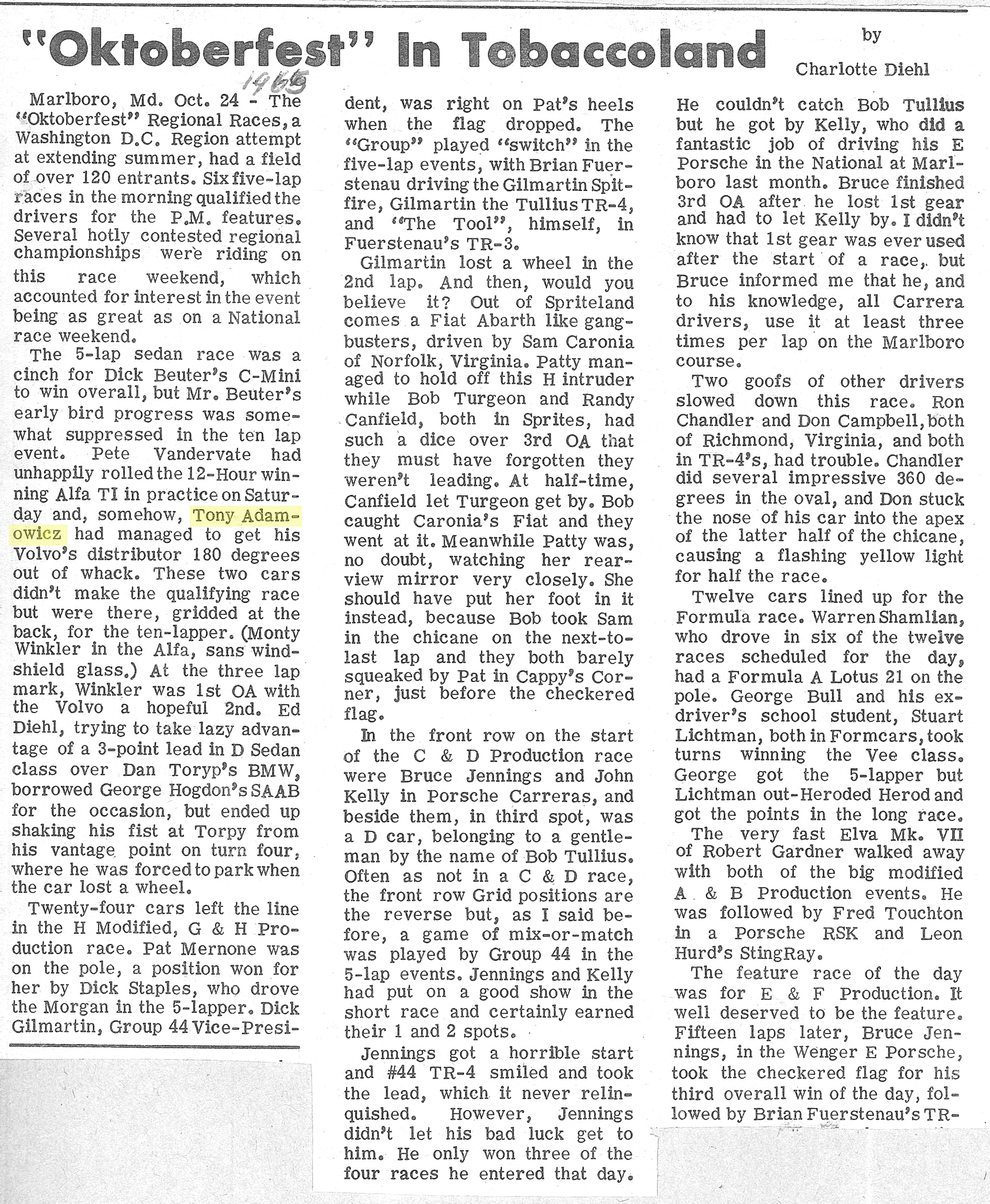

Tony’s future employer on their way to Marlboro with their Triumph Spitfire, TR3, and TR4 in 1965.
November 14,1965
Marlboro Speedway SCCA Regional
Upper Marlboro, Maryland
Volvo PV544


Sedan Race
Responding quickly to the Board of Governors decision to make sedans a national class in 166, some 25 tourers registered for the races. And because there were so many, it was decided to make theirs the feature race. There was some talk, though, about the natural of running a feature in the dark because of the heavy schedule, and what better cars to do it with than sedans?
The entry was a good one: Pete Van der Vate’s 12 Hour winning Alfa TI, Roger Teck’s Mustang, four Corvairs including one with 10″ rubber on the rear, Tony Adamowicz’s reworked Volvo, and a host of Renaults, Saabs, Minis and others. An upset of sorts was pulled by Adamowicz in the 5- lapper when he thrashed the Volvo around dirt ·track style to steal a win from the Van der Vate Alfa. The big American stuff had its own struggle with a bit of fender banging to liven up the proceedings. Roger Teck eventually moved his Mustang into third overall.

The Volvo’s ultimate lap time could best the Group 44 Lotus Cortina times at Marlboro, drum brakes and all! When I was hired to work for Group 44, Bob Tullius said I had to retire the car and not race it any longer. Later I drove it to Connecticut to work for Milestone Racing and eventually sold it to someone in Wilton, Connecticut. I wish I’d never done that.
The early record:
1963 — Began my road racing career in my Volvo 544 sedan at Marlboro, Maryland Raceway and won the race overall.
1964 — Finished second in Northeast SCCA Region in B-Sedan with the Volvo 544.
1965 — Won the Northeast SCCA Regional B-sedan Championship in Volvo.

